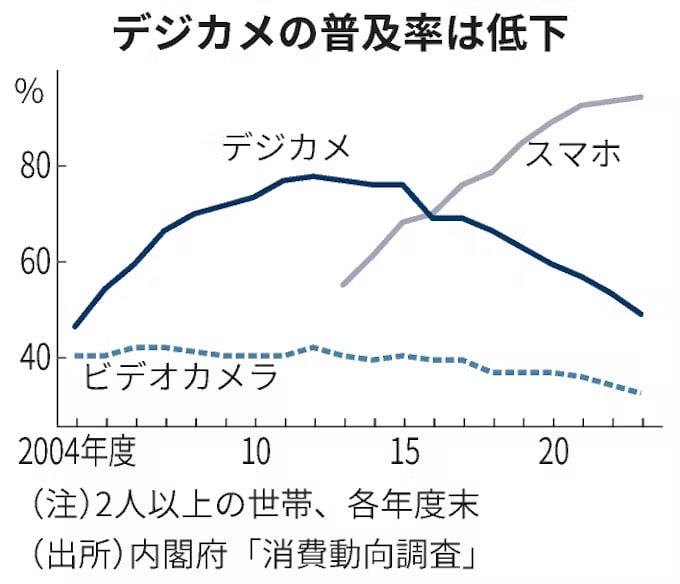Less Than Half of All Japanese Households Own a Digital Camera
![]()
More data from Japan shows that, looking back at the last 15 years, smartphones truly obliterated the compact camera market: the ownership rate of a standalone digital camera in Japan has fallen below 50% for the first time in 19 years.
In a survey of households by the Cabinet Office in Japan, only 48.6% said they owned a digital camera Nikkei reports. This doesn’t count smartphones (digital camera data out of Japan basically never does), but it does show that ownership of a camera outside of the one in everyone’s pocket has fallen to levels not seen since digital cameras began growing in popularity two decades ago. The last time the survey reported back data this low was in 2004.

Nikkei also reports that the Camera and Imaging Products Association (CIPA) showed that Japanese digital camera shipments fell from 11.11 million units in 2008 to just 910,000 units “at present.” That massive drop of over 92% in 15 years is low-hanging fruit for attention-grabbing headlines, but it’s not properly indicative of whole story.
There have been repeated stories about the collapse of the photography industry for the last several years, and nearly all of them are based on CIPA’s refusal to consider smartphones as digital cameras. As such, there is only ever a decline from a time when camera manufacturers were moving millions of compact point-and-shoots to now when there are significantly fewer — if any — being marketed by the major brands (there are exceptions, but the volumes are not nearly as high as what they were).
It’s better to look at sales numbers instead of unit numbers: overall camera sales are just 6.6% of what they were at their peak in 2012. Obviously, there has been a considerable decrease in camera sales numbers and unit volume over the past decade-plus, but it is mainly tied to the compact all-in-one camera sales that were obliterated by the advent of the smartphone camera.
Looking at each manufacturer, sales totals may be down, but revenues aren’t following step-for-step, which further backs up the idea that the great decline of the photo industry needs better contextualization. So while it’s easy to look at a 90%+ decline in camera sales and shout “the sky is falling,” it’s more measured to think of it as the entry-level has evaporated but camera companies have adapted — quite well, actually — to selling to enthusiasts.
Back to the note that less than half of Japanese households own a digital camera: that number would most certainly be higher if the question included smartphones because — and this for some reason continues to be a point of contention — those are cameras, regardless of what CIPA refuses to accept.
Image credits: Header photo licensed via Depositphotos.